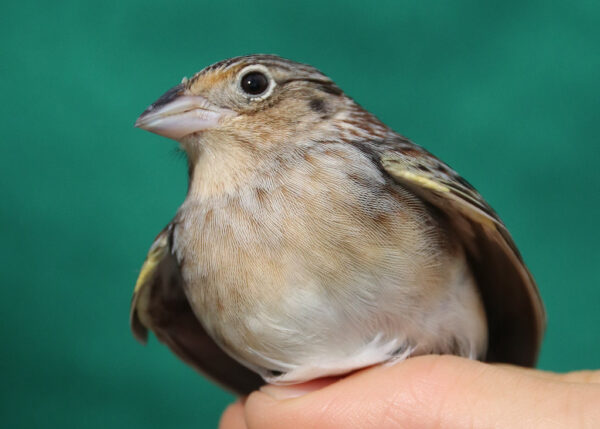Grasshopper Sparrows (Ammodramus savannarum) are small New World sparrows that inhabit grasslands and open fields. They are brown and tan with light streaking, a white belly, and an unstreaked buffy breast. The back is mottled tan, and they have a thin white eyering and a yellow patch behind the eye. Adults weigh no more than one ounce.
Physical Traits
Grasshopper Sparrows have flat heads, short tails, and cryptic coloration that help them blend in with their surroundings. They are about 5 inches long with a wingspan of 8 inches.
Life Span
The average life span of Grasshopper Sparrows is 2-3 years in the wild.
Habitat
Grasshopper Sparrows live in grasslands and open fields across North America. They prefer tall grasses for nesting sites and short grasses for feeding areas.
Diet
Grasshopper Sparrows feed on insects such as grasshoppers, beetles, caterpillars, spiders, snails, and other invertebrates found in their habitat. They also eat seeds from weeds or grains found in agricultural fields.
Reproduction
Grasshopper Sparrows breed between April to August, depending on the location. The female builds the nest on the ground near tall grasses or shrubs, laying 3-5 eggs that hatch after 11 days of incubation by both parents. The young fledge after 10-13 days but remain dependent on their parents for food for up to two weeks after leaving the nest.
Conservation Status
The Florida subspecies of Grasshopper Sparrow was listed as endangered in 1986 due to loss of habitat from development and agricultural practices such as converting native prairies into croplands or pastures for cattle grazing. In recent years conservation efforts have helped increase its population size; however, it remains vulnerable to extinction due to its small population size and limited range within Florida’s peninsula habitats.
Interesting Facts
Grasshopper Sparrows are one of the few North American sparrow species that sing two songs – a dry insectlike buzz followed by a trill – hence their name! They also tend to be very secretive birds, which can be challenging to spot even when singing!


